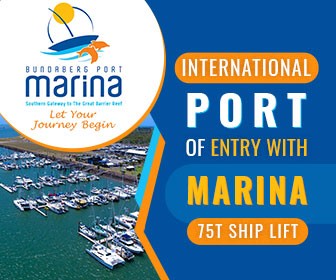Australia: Dodging Lobster Pots and Aquaculture Pens across the Great Australian Bight
Continuing their journey around the south of Australia, Canadian cruisers Brent Crack and Mary Bevan day-hopped from Adelaide to Port Lincoln before taking on the Great Australian Bight, a route not often attempted by cruising sailors. Their latest report contains some great tips for sailing this southern coastline including how to dodge lobster pots and aquaculture pens.
Published 7 months ago
Dodging nets and aquaculture pens
Continuing around the south of Australia, we chose day hopping in anchorages from Adelaide to Port Lincoln. Since most available spots to anchor are open roadstead type anchorages, it’s necessary to plan your stops based on wind directions.
During our approach to Port Lincoln at about 10nm off shore, we started seeing odd looking aquaculture type structures in the distance. We spotted netting extending slightly over the surface of the water. We soon saw a second then a third of these structures and we dropped our sails and swapped to motors to keep a better eye and give us faster reaction times. With a closer look, we realized that what we were seeing must be nets full of tuna and we were surrounded by them.
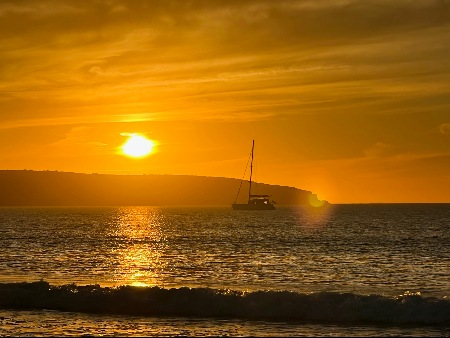

Luckily for us, we were arriving with good lighting and visibility. Markers identifying these nets were scarce and in poor conditions with very few yellow markers that we think could have some potential for radar to detect. Later, we spoke to another sailor who arrived in the dark and said there was a small flashing light and no other indication of the nets. Locals told us that the net pens are in rows and the route through is to start at an end of a row and go all the way to the other. Doesn’t help much when approaching for the first time from the side Locals also said that they avoid sailing in the dark in the area. As for Navionics, there is a small area off Port Lincoln showing an aquaculture facility — the reality of which is far larger than displayed on the charts.
Port Lincoln tuna pens
To provide further context of these aquaculture structures, we learned that they serve as live tuna net pens and feedlots. These pens are used by commercial fisherman who catch big schools of tuna and then drag them back to Port Lincoln at two knots in the nets to keep them alive. Once they arrive at their destination, the tuna are kept in the circular pens and fed there until harvested and sold.
We anchored outside of the town near the yacht club where we were joined by two other boats. As soon as we began exploring the town of Port Lincoln we knew it would be a spot we would wish we had more time in. Friendly locals, plenty of options for supplies and provisions and numerous restaurants.
Our arrival in Port Lincoln was well timed — the day before the expected finish of the Adelaide to Port Lincoln sailing race with the finish line right at the anchorage. We had a front row seat to watch race boats coming in and cheer on competitors. The Port Lincoln yacht club hosted the post race awards and celebrations.
Celebrating Coffin Bay Oysters
From Port Lincoln we sailed to Coffin Bay. Located up a shallow estuary, Coffin Bay takes some time to get to but is worth the visit. We signed up for their oyster tour and it was the best tourism experience we’ve had so far in Australia. We had family join us in Coffin Bay and it was a great start to their adventure. The oysters were amazing, our guides were well practiced and entertaining, and shucking your own oysters while wearing waders is a good time.
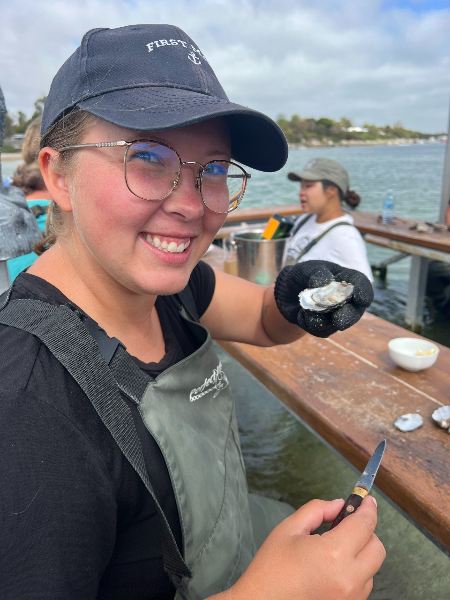

We planned to cross the Great Australian Bight at the earliest opportunity. We watched the weather and decided to delay our crossing by heading north to Ceduna. On our way there, we stopped at Flinders Island, Sceale Bay and Streaky Bay.
We read ahead — as we always do, and reports said Ceduna had good anchorage in front of town. After repeated attempts with dragging and never digging in, we can’t recommend it. We were forced to move to the marina on the other side of town. We’ve come to realize that if you don’t see other boats, especially a lack of derelict/abandoned boats, it’s usually because they can’t get their anchors stuck long term.
While the marina isn’t close to the central town, we were fortunate to have some of the locals help us out with rides back and forth as needed. While Ceduna had supplies, our perspective is that Port Lincoln was much better for all purposes.
After waiting for ugly weather to pass in Ceduna, it was time to cross the Great Australian Bight — just over 600nm to our next stop: Esperance.
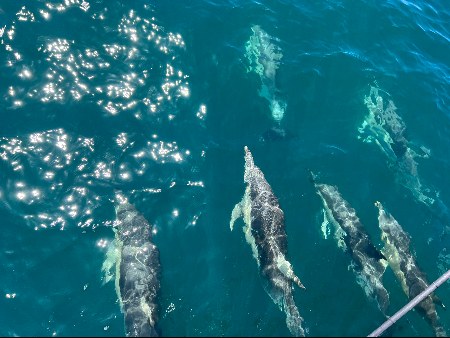

Nowhere to hide across the Great Australian Bight
The Great Australian Bight has a reputation in the sailing world, but especially among Australian sailors. Some avoid it entirely, others only cross from West to East and few cross from East to West. We were warned extensively of big winds, big waves and nowhere to hide.
Depending on your jumping off point, the distance can be shortened to 435nm by going from Point Fowler to Daw Island. Most choose to leave between Port Lincoln and Ceduna, placing the crossing between the 500-600nm range.
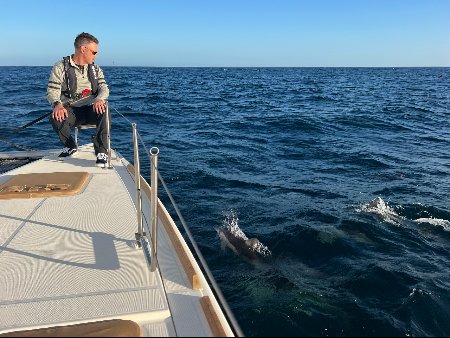

Our understanding is that the months of January to March are the only times to cross from East to West. We watched weather windows of approximately five days or more which maintained easterly and south easterly winds before a strong south westerly would make it difficult.
We were fortunate in our crossing to have winds of 10-25 knots from the SE to the E and we shot across in just over four days. We used a Code 0, Parasail and then just the Genoa for the final bit of downwind sailing as we approached Esperance when the winds picked up.
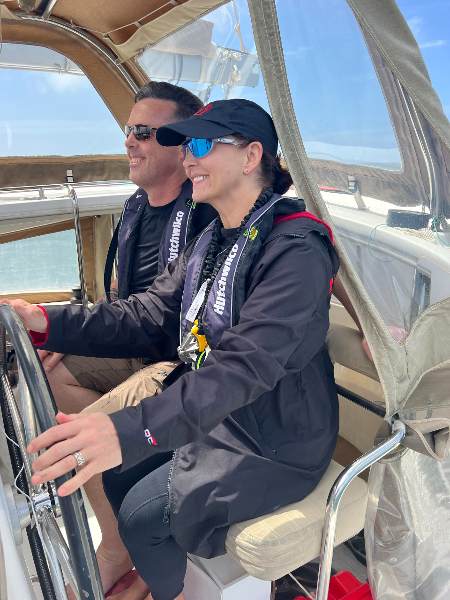

The only thing about our crossing that we would have done differently is that we would have waited a bit later before departing. As soon as the winds changed south we set off, but encountered a left over SW swell generated by the passing front. The swell lasted longer than we expected and made for a less than fun first day.
Rounding Cape Leeuwin
After celebrating our crossing of the Great Australian Bight with our arrival in Esperance, we stayed for a few days before continuing to Albany where we waited for our next weather window to round Cape Leeuwin. Cape Leeuwin is considered one of the three great capes of the world (along with Cape of Good Hope and Cape Horn). Cape Leeuwin is also the dividing point between the Southern (Antarctic) Ocean and the Indian Ocean. A perfect weather window soon showed itself and we departed Albany to finish our rounding of the bottom of Australia. Unlike other capes, Cape Leeuwin had no significant change of wind as we passed by.
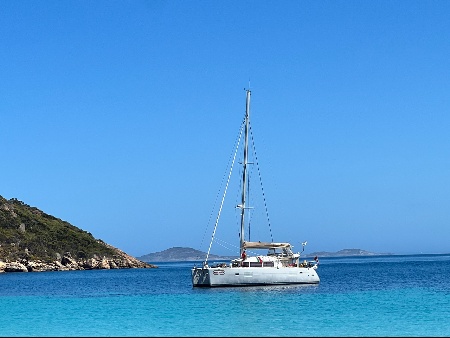

After rounding Cape Leeuwin, we day hopped our way up to Fremantle where we stayed at the Fremantle Sailing club which offers international visitors three free nights in the marina. We found the marina was a good spot to stay and rest and recover from a long crossing and to prepare for the next departure.
Going around the bottom of Australia is something that I recommend more cruisers should do. It keeps you moving west during the cyclone season in the north and it’s an amazing blend of small towns with great hospitality. I’m surprised more cruisers don’t tackle this route. As an added bonus, it sets you up nicely for an Indian Ocean crossing to Mauritius.
Brent Crack and Mary Bevan
SV Knot Safety
………………………………
About the Authors:
Brent Crack and Mary Bevan are two Canadian citizens who have sailed across the South Pacific on a Lagoon 400 catamaran SV Knot Safety. After making it to Whangarei, New Zealand where they hauled out for some repairs and maintenance, they continued their journey westwards – landing in Sydney, Australia in time for New Year’s Eve.
Not wanting to deal with the cyclone season as well as crocodiles, warm weather and not being able to jump in the water, they decided to head south around the bottom of Australia preferring to “go where others don’t.” This led to a challenging journey across the Great Australian Bight and around Cape Leeuwin, one of the world’s Great Capes to Fremantle and finally Geraldton where they hauled out for repairs and maintenance.
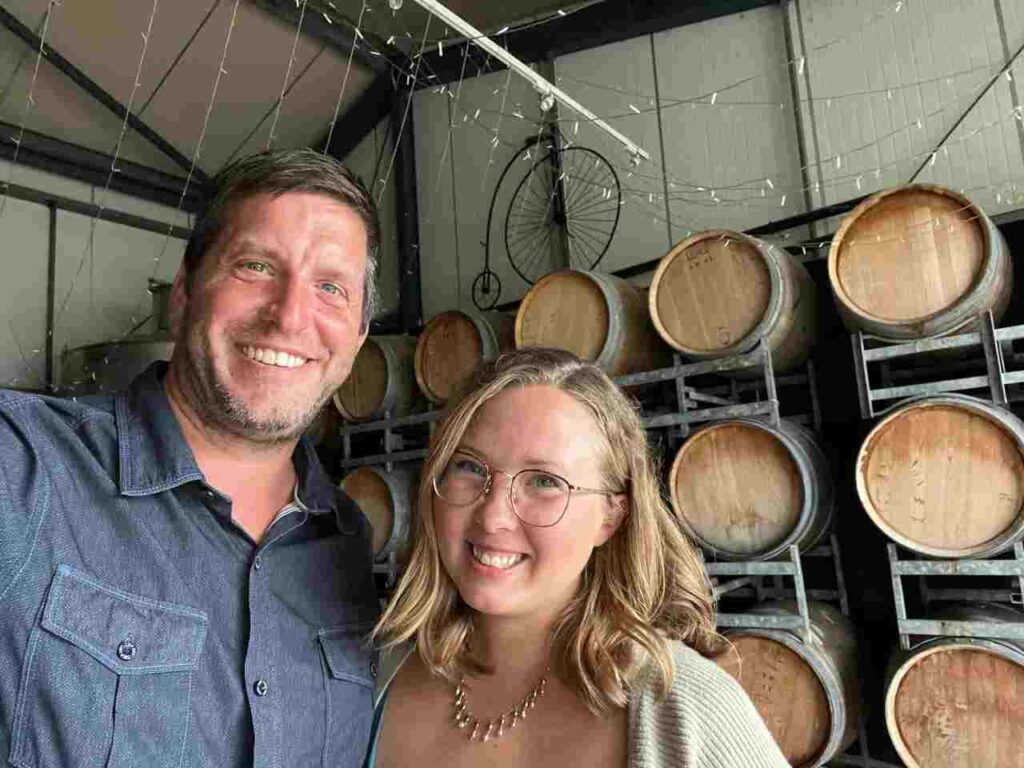
………………………………
The opinions expressed in this article are the author’s own and do not reflect the view of Noonsite.com or World Cruising Club.
………………………………
Other reports from Brent and Mary’s Circumnavigation Odyssey:
- Australia: Heading South from Sydney Going West
- Australia, Sydney: New Year’s Eve Magic and Chaos.
- Cook Islands, Rarotonga: We’d Return in a Heartbeat – Just Not With a Boat!
- French Polynesia: Making Sense of Anchoring Restrictions
- French Polynesia, Society Islands: The Beauty and Disappointment
- French Polynesia, Tuamotus: Coral Bombies, Snorkelling and Sharks
- French Polynesia – A Warm Welcome to the Gambiers
- Pitcairn Island – Well Worth the Journey
- Rapa Nui (Easter Island) – Nothing Short of Amazing
………………………………
Find out all news, reports, links and comments posted on Noonsite, plus cruising information from around the world, by subscribing to our FREE monthly newsletter. Go to https://www.noonsite.com/newsletter/.
Related to following destinations: Adelaide, Esperance, Geraldton, Port Lincoln, South Australia, Western Australia
Related to the following Cruising Resources: Circumnavigation, Routing




